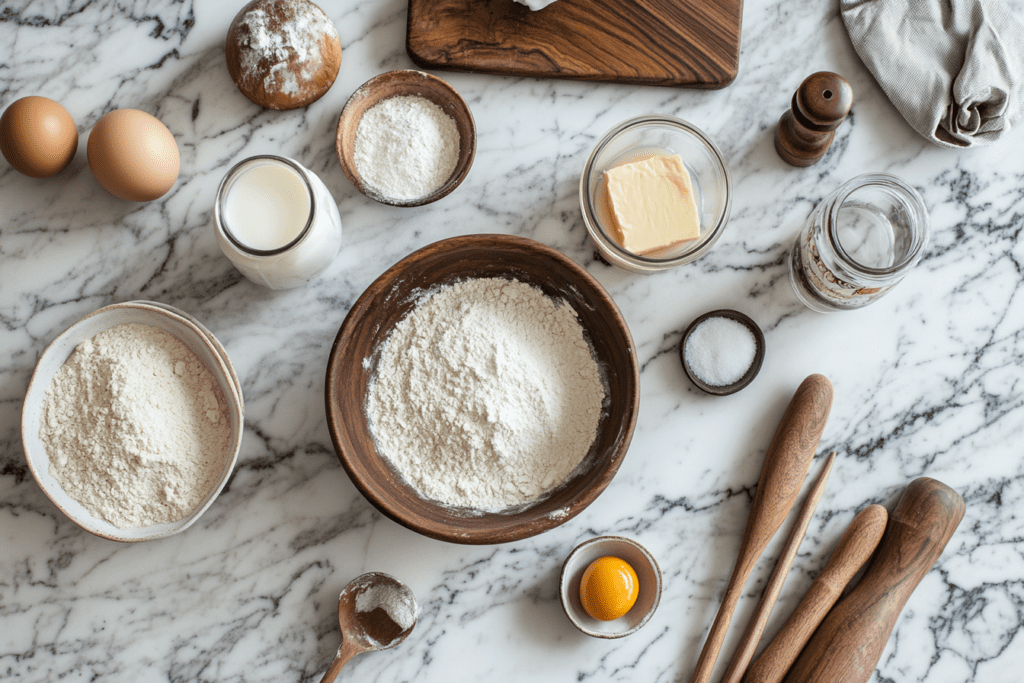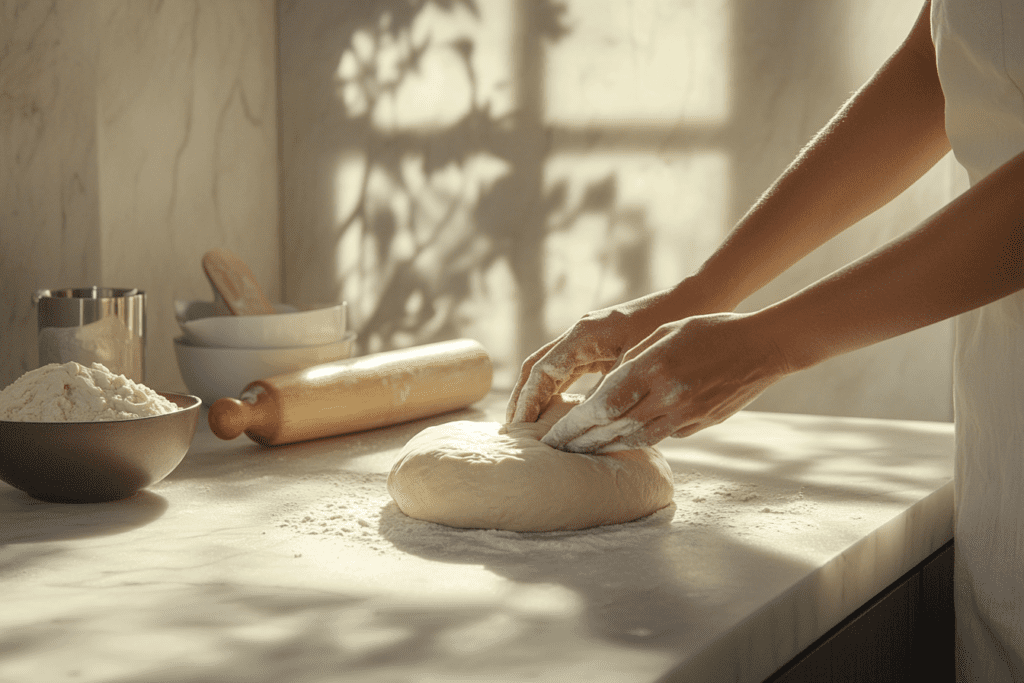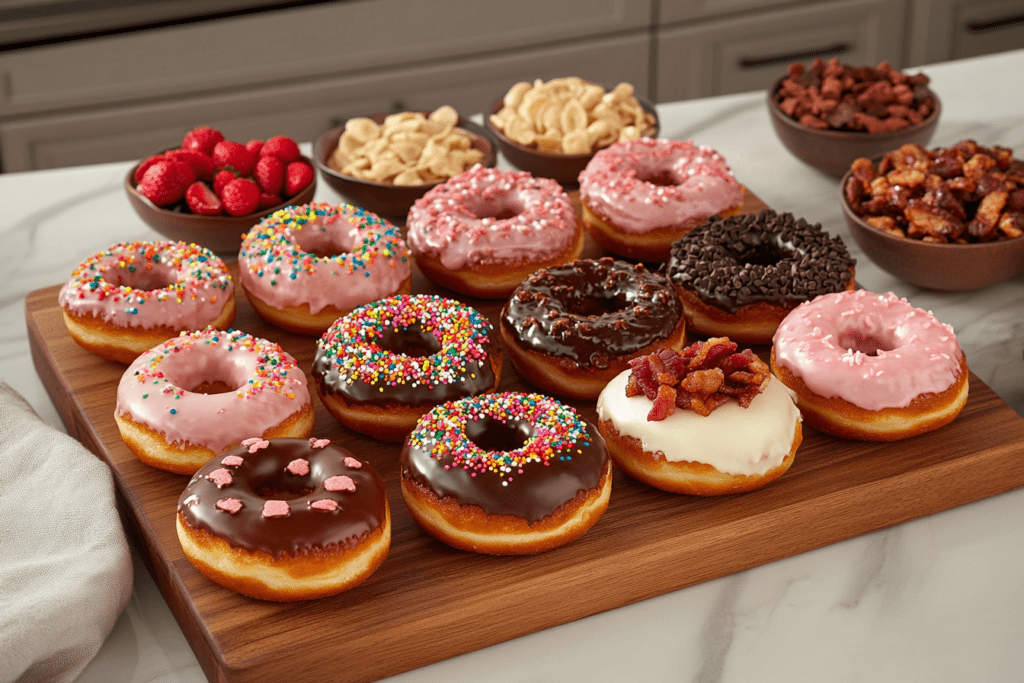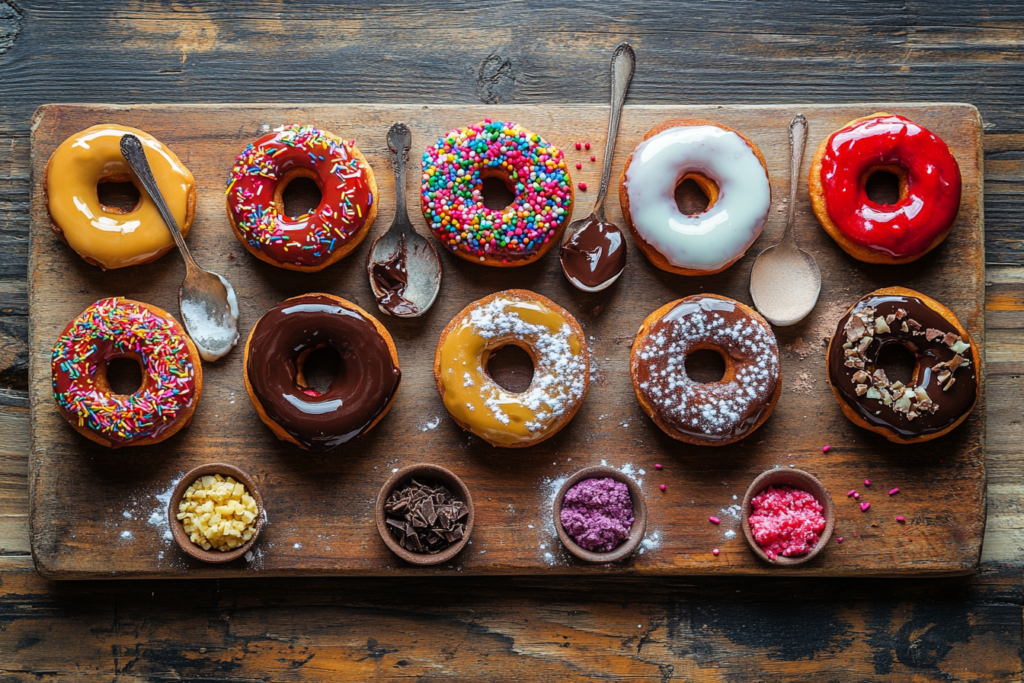Who doesn’t love the warm, pillowy texture of freshly made glazed donuts? Whether it’s the nostalgic scent of yeast rising or the sugary glaze melting in your mouth, it’s no wonder glazed donuts are a universally adored treat. This homemade glazed donuts recipe will guide you through every step of creating soft and fluffy donuts with a rich vanilla glaze that rivals any Krispy Kreme alternative. Get ready to transform your kitchen into a homemade glazed donuts haven!
Why Make the Best Homemade Glazed Donuts?
Homemade glazed donuts are not just a dessert; they’re an experience. From the process of scalding milk to proofing dough, every step lets you take control of flavor and quality. Plus, making your own donuts allows for endless customization—try adding a pinch of nutmeg or experimenting with chocolate and maple glaze variations. With this homemade glazed donuts recipe, you’ll not only master the art of creating soft and airy yeast donuts but also enjoy treats perfect for breakfast, dessert, or just because! Want to explore other dessert ideas? Check out our healthy ice cream recipes for a refreshing contrast to these indulgent treats.
Key Ingredients for Perfect Homemade Glazed Donuts

To make the perfect homemade glazed donuts, you’ll need these essential ingredients:
For the Dough:
- All-Purpose Flour is the base of your donuts, as it provides structure. Similarly, Yeast—whether active dry or instant—ensures that fluffy rise. Next, Milk, which should be scalded and cooled, improves the dough’s texture. In addition, Sugar adds sweetness while also helping to activate the yeast. Eggs not only bind the dough but also contribute richness, while Butter makes the donuts soft and flavorful. Furthermore, Salt balances the sweetness, and Vanilla Extract enhances the overall flavor. Finally, Nutmeg (optional) adds a subtle warmth to the dough for an extra touch of flavor.
For the Vanilla Glaze:
- Powdered Sugar: The base for the glaze. – Milk or Cream: Creates the desired glaze consistency. – Vanilla Extract: Adds a classic flavor. For detailed guidance on working with yeast, refer to this comprehensive guide to baking with yeast.
Step-by-Step Recipe Guide for Soft and Fluffy Homemade Glazed Donuts
1. Preparing the Dough

Scald the Milk
Scalding milk (heating to 180°F and cooling) deactivates enzymes that can weaken gluten formation, resulting in a softer dough. Learn more about the science behind scalding milk here.
Activate the Yeast
- Dissolve 1 packet of yeast in 1/4 cup warm water (110°F) with 1 tablespoon of sugar. – Let it sit for 5-10 minutes until frothy. If it doesn’t bubble, start over with fresh yeast.
Mix the Dough
- In a large mixing bowl, combine scalded milk, sugar, butter, and salt. Let cool. 2. Add yeast mixture, eggs, and vanilla extract. 3. Gradually mix in flour until the dough forms and pulls away from the bowl.
Knead
Knead the dough on a floured surface for 8-10 minutes until smooth and elastic. The dough should feel slightly sticky but not cling to your hands.
2. Proofing the Dough
Place the dough in a greased bowl and cover with a damp towel. Let it proof for 1-1.5 hours in a warm area until it doubles in size. For overnight proofing, refrigerate the dough after kneading to develop a deeper flavor.
3. Shaping Your Homemade Glazed Donuts to Perfection
- Roll out the dough to 1/2-inch thickness on a floured surface. 2. Use a donut cutter or two round cutters (e.g., a glass and a bottle cap) to shape the donuts. 3. Place cut donuts on a parchment-lined tray and proof again for 30 minutes until puffy.
4. Frying the Donuts
Prepare the Oil
- Heat peanut or vegetable oil in a Dutch oven to 350°F. Use a candy thermometer to maintain the temperature.
Fry
- Fry donuts 1-2 minutes per side until golden brown. Avoid overcrowding the pot. – Place fried donuts on a wire rack lined with paper towels to drain excess oil. For additional frying tips, check out these safe storage practices for homemade recipes.
5. Making the Classic Vanilla Glaze for Homemade Donuts
- First, in a bowl, whisk together 2 cups of powdered sugar, 1/4 cup of milk, and 1 teaspoon of vanilla extract until the mixture is smooth. Then, dip each donut into the glaze while it is still warm, allowing the excess to drip off. Finally, place the glazed donuts on a rack to set and let the glaze firm up.
Pro Tips for Homemade Glazed Donuts
- Oil Temperature: Consistently monitor the oil temperature to prevent uneven frying. – Gentle Handling: Handle dough carefully to retain airiness. – Donut Cutter Alternatives: Use a mason jar lid or cookie cutter if you don’t have a donut cutter. – Storage: Store donuts in an airtight container for up to 2 days or freeze unglazed donuts for up to 3 months.
Variations and Toppings

- Chocolate Glaze: Replace vanilla with melted chocolate. – Maple Bacon: Add maple extract to the glaze and sprinkle crumbled bacon. – Strawberry Frosting: Mix powdered sugar with pureed strawberries for a fruity twist.
Cultural and Regional Variations
Donuts are beloved worldwide, with delightful regional variations. Dutch oliebollen, for example, are fried dough balls often enjoyed during New Year’s celebrations. Indian gulab jamun offers a sweet, syrupy twist to deep-fried desserts. Exploring these variations not only expands your palate but adds cultural depth to your donut-making journey. Explore rustic and culturally inspired recipes for more global flavors.
Pairing Suggestions
Pairing homemade glazed donuts with the right beverages or sides elevates the experience. Enjoy your donuts with freshly brewed coffee, creamy hot chocolate, or a refreshing fruit smoothie. For a tropical twist, pair your donuts with a refreshing Bahama Mama smoothie. These combinations make every bite even more indulgent.
Nutritional Balance
While donuts are a delicious indulgence, balancing them with lighter meals is a great way to maintain a healthy lifestyle. Start your day with nutritious options like oatmeal or avocado toast, and save homemade glazed donuts as a sweet treat. Explore nutritious breakfast recipes to start your day right.
Advanced Techniques and Alternative Methods
Take your donut-making skills to the next level by experimenting with advanced techniques. Fill your homemade glazed donuts with cream or jelly for a bakery-style treat, or try using an air fryer for a healthier alternative. Experiment with creative recipes and techniques for a culinary adventure.
Glaze Customization

While a vanilla glaze is a classic choice, there’s no limit to the flavors you can create. Add espresso powder for a coffee glaze, or mix in matcha for a trendy twist. Learn how to customize flavors with creative ingredients.
Troubleshooting Tips
Perfecting homemade glazed donuts comes with its challenges. Here are some common issues and tips on how to fix them: First, if your dough isn’t rising, ensure that your yeast is fresh and that the environment is warm enough. Next, to avoid uneven frying, always maintain a consistent oil temperature using a thermometer. Lastly, if the glaze isn’t setting properly, allow the donuts to cool slightly before applying the glaze. Simplify cooking with these easy, fail-proof recipes.
Historical or Fun Facts
Did you know that National Donut Day originated in 1938 to honor Salvation Army volunteers who served donuts to soldiers during World War I? Or that the first donut machine was created in 1920 in New York City? These fun tidbits add a sprinkle of history to your baking experience. Discover the stories behind your favorite treats.
Conclusion
Making homemade glazed donuts is a rewarding process that brings bakery-quality treats right to your kitchen. Whether you’re a seasoned baker or a beginner, this step-by-step guide equips you with the techniques and tips to create the perfect donuts. Pair them with a cup of coffee, share with friends, or savor them solo—homemade glazed donuts are always a good idea! Craving more dessert inspiration? Explore healthy dessert options like creamy ice cream recipes or add a spooky twist to your dessert menu with spider web cookies.

